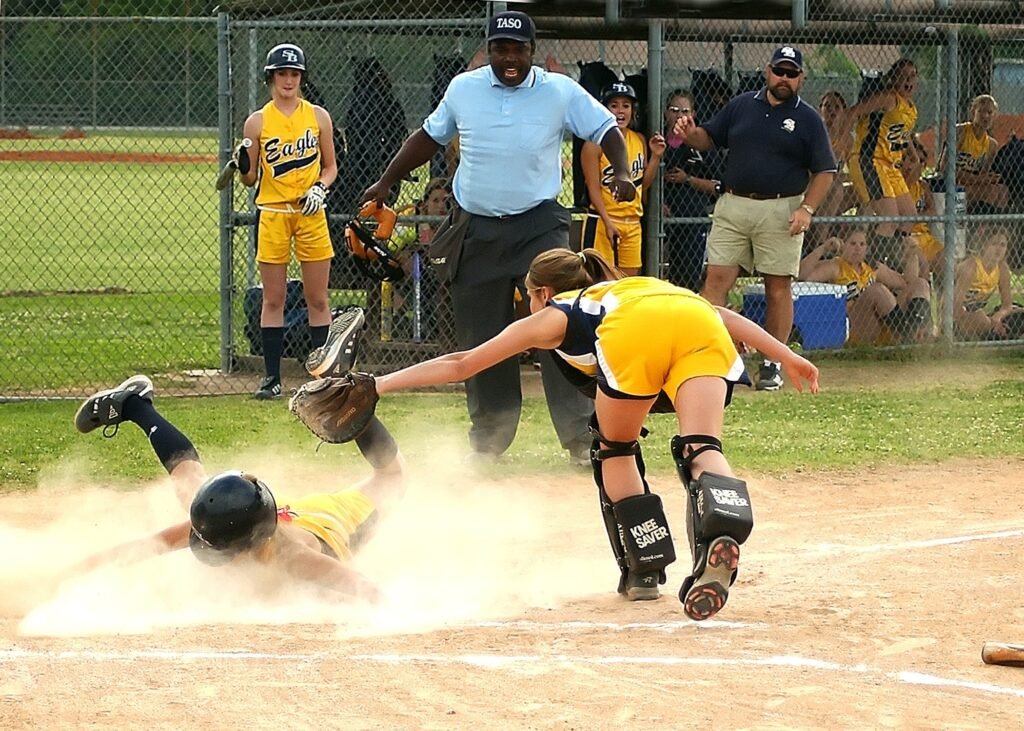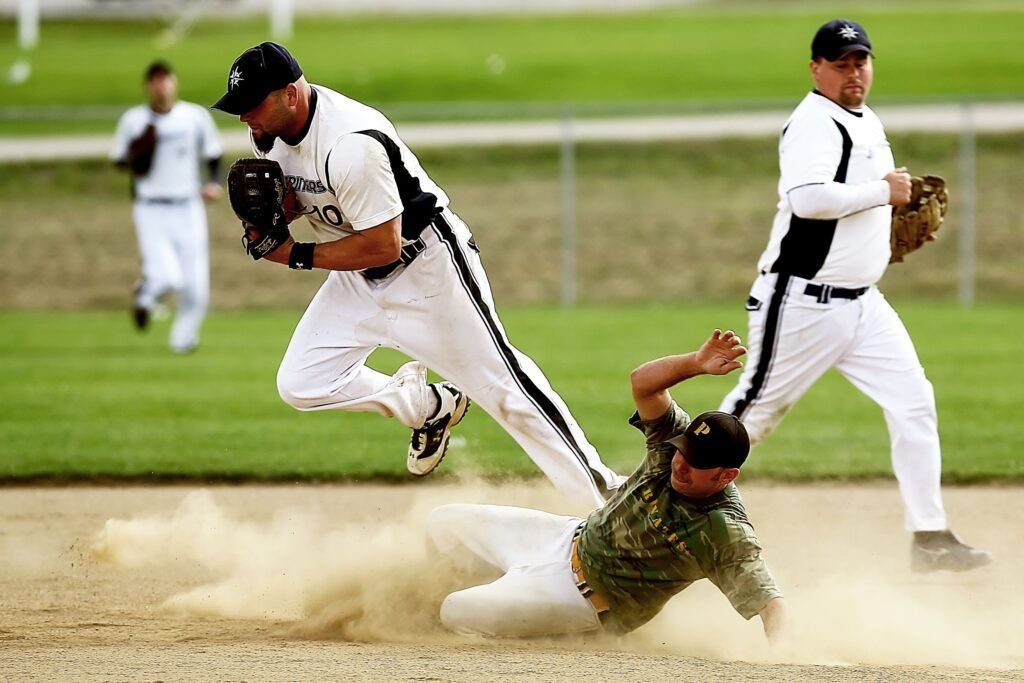As a curious researcher and sports enthusiast, I delved into the question: Is baseball a dangerous sport?
Baseball is a dangerous sport. In fact, it’s one of the most dangerous sports in the world. It takes years of practice, skill, and strength to become a great pitcher or hitter. A baseball bat can cause serious injuries. A pitch can easily break a bone. And if you do get hit by a pitch, you might not even know it until hours later.
In my research, I discovered several surprising facts. For instance, according to a study by the American Academy of Pediatrics, baseball has the highest overall injury rate among children.
Furthermore, I came across the unfortunate story of a talented young athlete whose promising baseball career was cut short due to a shoulder injury caused by realistic factors such as improper throwing mechanics and inadequate rest periods, emphasizing the real dangers of overuse and poor training practices in baseball.
Moreover, while baseball may not involve as much physical contact as other sports, there are still inherent dangers present. The risks are real, from foul balls hitting spectators to collisions between players on the field.
Through my research, I aim to raise awareness about the potential dangers of baseball and encourage players, coaches, and parents to take proactive steps to minimize risks and ensure the safety of all involved.
it’s crucial to understand the potential dangers associated with this sport. So, is baseball a dangerous sport? Let’s delve deeper to determine the answer.
Is Baseball a Dangerous Sport?

Baseball, often referred to as America’s favorite pastime, is a thrilling and competitive sport enjoyed by millions worldwide. However, amidst the excitement and passion for the game, it’s important to acknowledge that baseball is not without its hazards.
From bone-crunching impact injuries to insidious overuse injuries, from inadequate training practices to potential dangers lurking on the field, baseball can pose risks to players of all ages and skill levels.
Baseball, without a doubt, is a high-octane and adrenaline-pumping sport, especially at the higher levels. Picture pitchers hurling fastballs at speeds exceeding 100 miles per hour, and hitters launching baseballs with similar velocity.
Positions near the home plate are inherently perilous due to the sheer force involved. However, it’s not just the power of the game that makes baseball a dangerous sport. The risks also stem from overuse of specific joints and poor technique, which can result in debilitating injuries.
In this article, we will delve into the question of whether baseball is a dangerous sport, exploring various aspects that highlight the potential risks and safety considerations associated with the game.
Dangerous Aspects of baseball
Like any other sport baseball also comes with its share of risks and hazards. From impact injuries to overuse injuries, poor training practices to inadequate protective equipment, environmental hazards to dehydration and heat-related illnesses, there are several dangerous aspects of baseball that players, coaches, and parents need to be aware of.
Pitchers, in particular, face unique risks due to the repetitive stress of pitching. Skipping warm-up and stretching routines can also increase the risk of muscle strains and sprains.
It’s crucial to take appropriate precautions, such as proper training, conditioning, and use of protective gear, to minimize these risks and ensure a safe and enjoyable experience on the baseball field.
Let’s now delve into a detailed exploration of the various dangerous aspects of baseball, shedding light on the risks and hazards that players may encounter on the field. Here are some most dangerous aspects of baseball.
Impact Injuries
Baseball involves actions that can result in impact injuries, such as collisions between players, being hit by a pitched ball, or sliding into bases. These can lead to bruises, contusions, fractures, and other types of injuries.
Impact injuries are a significant concern in baseball, and players are at risk of various types of injuries due to collisions or being hit by balls. Let’s take a closer look at some of the common impact injuries in baseball.
Being hit by a pitched ball
Batters, catchers, and base runners are at risk of getting hit by a pitched ball, which can result in injuries ranging from bruises to fractures. Fastballs can travel at speeds exceeding 100 miles per hour, posing a significant risk to players, especially if they are not wearing appropriate protective gear.
Collisions between players

Collisions between players can occur during plays such as sliding into bases, fielding a ball, or trying to catch a fly ball. These collisions can result in injuries such as sprains, strains, contusions, or even more severe injuries like concussions or fractures.
Fielding mishaps
Players, particularly outfielders, may collide with fences, walls, or other stationary objects while trying to make a play on a ball. These collisions can result in injuries ranging from cuts and bruises to more severe injuries like fractures, dislocations, or head injuries.

Base running accidents
Base runners can be at risk of impact injuries from collisions with fielders or catchers during attempts to steal bases or slide into bases. These injuries can range from bruises and abrasions to more severe injuries like fractures, sprains, or dislocations.
It’s essential for players to be aware of the risks of impact injuries in baseball and take appropriate precautions, such as wearing protective gear, using proper techniques, and following safety guidelines, to minimize the risk of these types of injuries on the field.
Overuse Injuries
Overuse injuries are another common concern in baseball, as players often engage in repetitive motions that can strain their muscles, tendons, and joints over time. Here are some examples of overuse injuries in baseball.
- Pitcher’s elbow: Also known as medial epicondyle apophysate, this is a common overuse injury among pitchers. It is characterized by pain and inflammation on the inner side of the elbow and can be caused by repetitive throwing motions, especially with improper mechanics or excessive pitching workload.
- Pitcher’s shoulder: This is a condition that affects the shoulder joint and surrounding muscles, tendons, and ligaments in pitchers. It can result from repetitive overhead throwing motions, leading to pain, weakness, and limited range of motion in the shoulder.
- Rotator cuff injuries: The rotator cuff is a group of muscles and tendons that stabilize the shoulder joint. Overuse of the shoulder in baseball, especially in pitchers, can lead to strain, tears, or inflammation of the rotator cuff, causing pain, weakness, and limited shoulder function.
- Stress fractures: Repetitive impact on bones, such as the throwing arm or the legs during running, can lead to stress fractures. These are small cracks in the bones that can cause pain and discomfort, requiring rest and rehabilitation for proper healing.
- Carpal tunnel syndrome: This condition can affect baseball players who grip the bat tightly or catch balls repeatedly. It involves compression of the median nerve in the wrist, causing pain, numbness, and tingling in the hand and fingers.
Environmental Hazards
Environmental hazards in baseball refer to external factors that can pose risks to players’ health and safety during games and practices.
It is crucial for players, coaches, and field managers to be aware of potential environmental hazards and take appropriate measures to mitigate risks.
This may include proper field maintenance, ensuring adequate lighting, providing access to shade and hydration in extreme weather, and taking precautions to prevent encounters with wildlife.
Ensuring a safe playing environment is essential in minimizing the risk of environmental hazards and promoting the well-being of baseball players.
Some common environmental hazards in baseball include
- Extreme weather conditions
- Poor field conditions
- Inadequate lighting
- Surrounding obstacles
Tips to Prevent baseball dangers
Preventing dangers in baseball requires a proactive approach and adherence to proper safety measures. Here are some Tips & Tricks to help players reduce the risk of injuries.
- Proper warm-up and stretching: Prior to practice or games, players should engage in a thorough warm-up routine that includes dynamic stretching to prepare the muscles for the physical demands of baseball. This can help improve flexibility, circulation, and reduce the risk of muscle strains or pulls.
- Adequate rest and recovery: Overuse injuries are common in baseball due to repetitive motions. Players should prioritize rest and recovery days to allow their bodies to heal and prevent overuse injuries from occurring. It’s important to listen to your body and avoid excessive throwing or hitting without proper rest.
- Proper equipment: Wearing the right baseball equipment, such as helmets, protective padding, and appropriate footwear, can significantly reduce the risk of injuries. Players should ensure that their equipment fits properly and is in good condition.
- Environmental awareness: Players, coaches, and field managers should be vigilant about environmental hazards, such as poor field conditions, inadequate lighting, extreme weather, and wildlife encounters. Taking appropriate measures, such as field maintenance, proper lighting, and avoidance of hazardous areas, can help prevent injuries.
- Proper nutrition and hydration: Eating a well-balanced diet and staying hydrated before, during, and after games and practices can help support a player’s overall health and performance. Proper nutrition and hydration can also aid in muscle recovery and reduce the risk of cramps and other health-related issues.
- Communication and reporting of injuries: Players should communicate any discomfort or pain they experience to their coaches or medical staff promptly. Ignoring signs of injury and playing through pain can lead to more severe injuries and prolonged recovery time.
Final Thoughts
In conclusion, baseball can be a physically demanding sport with inherent risks, but proper safety measures, including warm-up routines, proper technique, rest and recovery, appropriate equipment, environmental awareness, strength and conditioning, nutrition and hydration, and open communication about injuries can help mitigate these risks.
While there are potential dangers associated with impact injuries, overuse injuries, and environmental hazards in baseball, these risks can be minimized through proactive measures and responsible play.
So, is baseball a dangerous sport? Like any sport, there are risks, but with proper precautions and adherence to safety guidelines, the risk of injuries can be significantly reduced.
It’s important for players, coaches, and parents to prioritize safety, promote healthy practices, and be vigilant in preventing and managing injuries.
By being proactive in injury prevention, promoting good sportsmanship, and prioritizing player safety, baseball can be enjoyed as a thrilling and rewarding sport without compromising on the well-being of the players.
With the right mindset, preparation, and precautions, baseball can be a safe and enjoyable sport for players of all ages. So, play safe, follow proper techniques, and take necessary precautions to keep the game enjoyable and injury-free.



Pingback: Why Is Baseball So Boring? (5 Powerful Reasons) - Bat Everywhere
Pingback: Why Do Girls Play Softball Instead of Baseball? Top Guide